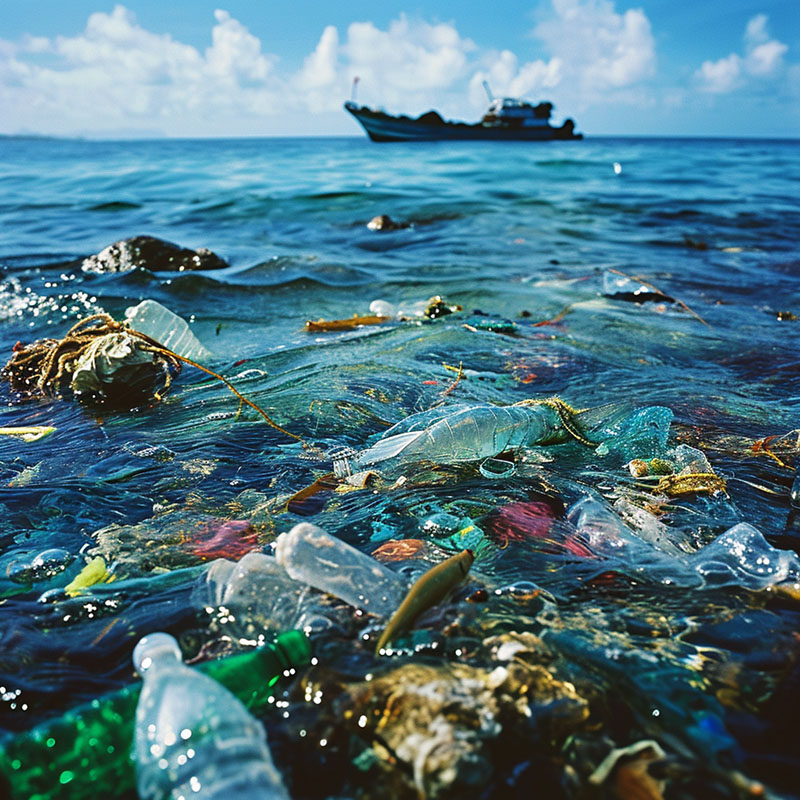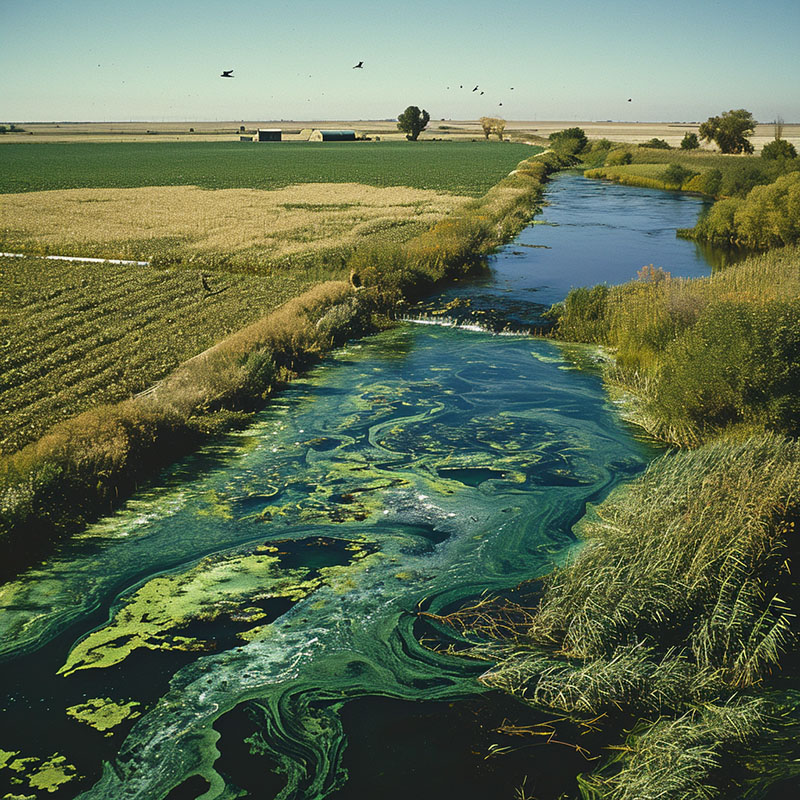




The United States and the People's Republic of China share a common problem : elevated nitrate concentrations in water supplies used for drinking water, according to a recently released report by the U.S. Geological Survey (USGS). While elevated concentrations of nitrate in water have been known to cause illness in babies, there is also indirect evidence that they can cause cancer. Because of the increased use of fertilizers worldwide since the 1950s, drinking water derived from aquifers in both countries have seen increased levels of nitrate, a plant nutrient regulated by the Safe Drinking Water Act in the U.S. and by the Ministry of Water Resources in China.
"On average, similar levels of nitrate were found in both countries in areas where heavy agricultural use of nitrate fertilizers is common," said the report's author, Joseph Domagalski, a USGS hydrologist. "However, the highest concentrations were measured in China."
This false-color image over Australia, produced using NOAA Advanced Very High Resolution Radiometer (AVHRR) data, shows where pollution from human industry reduced clouds' particle sizes. Polluted clouds may rain less frequently then unpolluted clouds because the pollutants prevent water droplets from growing large enough to precipitate. Blue areas are cloudless, while purplish-red areas are covered by thick clouds comprised of large droplets. The yellowish-green and orange streaks are clouds comprised of small droplets. These latter clouds are more polluted than the purplish-red clouds and literally pointing to their sources of pollution.
 The Ministry of Water Resources and the USGS agreed to study the ground water quality of a heavily used agricultural region in northern Hebei Province, located southeast of the city of Beijing, and to compare the quality of that water with similar areas in the U.S. The areas studied in the U.S. included the Central Valley of California and the Delmarva Peninsula of Maryland, Virginia, and Delaware.
The Ministry of Water Resources and the USGS agreed to study the ground water quality of a heavily used agricultural region in northern Hebei Province, located southeast of the city of Beijing, and to compare the quality of that water with similar areas in the U.S. The areas studied in the U.S. included the Central Valley of California and the Delmarva Peninsula of Maryland, Virginia, and Delaware.
"Despite the fact that the agricultural land in China has been farmed for a much longer time relative to land farmed in the U.S., the patterns of nitrate contamination are similar," said Domagalski. The reason for this similarity includes the increasing worldwide availability of nitrogen fertilizer since the 1950s as part of the Green Revolution to increase agricultural production worldwide. Heavier use of nitrate fertilizer in China, and well construction techniques that allow for easy infiltration of rainwater or irrigation water, account for some of the higher concentrations there.
A surprising finding was that pesticides were not detected in any of the wells sampled in China. Although it was assumed that similar types of pesticides would be used in both countries, the lower use of these types of chemicals in China probably accounts for the lack of detections in water.
 High turbidity and vigorous mixing is evident in this SeaWiFS view of the Sea of Azov. The long cloud bank on the western edge of the image throws an equally long shadow on the land and water beneath.
High turbidity and vigorous mixing is evident in this SeaWiFS view of the Sea of Azov. The long cloud bank on the western edge of the image throws an equally long shadow on the land and water beneath.
April 30, 2002 - Scottish Water fined 35,000 for water pollution
Scottish Water (successor to West of Scotland Water) pled guilty to three counts of causing sewage effluent to enter streams in East Kilbride and was fined 35,000 today at Hamilton Sheriff Court, by Sheriff Gibson. The case was a result of a report sent to the Procurator Fiscal by the Scottish Environment Protection Agency (SEPA).
The Water Authority inherited a problematic sewerage system from its predecessors, which had been causing frequent overflows of untreated sewage effluent into many amenity streams in East Kilbride for several years.
The principal problem was that the town had over 2500 manholes, each of which was shared by a foul sewer and a rainwater drain. When chokes occurred in the foul sewers, this caused the sewage to overflow into the rainwater drains, which quickly conveyed the sewage into the nearest streams.
There had been an ongoing programme to dedual these manholes but it had fallen behind statutory deadlines. SEPA officers took formal samples at several water pollution incidents during April - June 2001 caused by chokes in the foul sewers and reported these incidents to the Procurator Fiscal. Most of the incident locations were features in playparks and public walkways.
Chris Willmott, SEPA Team Leader for the South Lanarkshire area, said "SEPA will not tolerate such abuse of the environment and although the fine is in no way comparable to the severity of the environmental damage caused over a long period of time, it is pleasing to note that Scottish Water have recently committed some 7.3million to the dedualling of the manholes in East Kilbride and that this project is already progressing with due speed."
"SEPA wishes to thank the many concerned people who have suffered the unpleasantness of these pollution incidents and brought them to our attention, so that prompt remedial action and appropriate enforcement action could be taken."